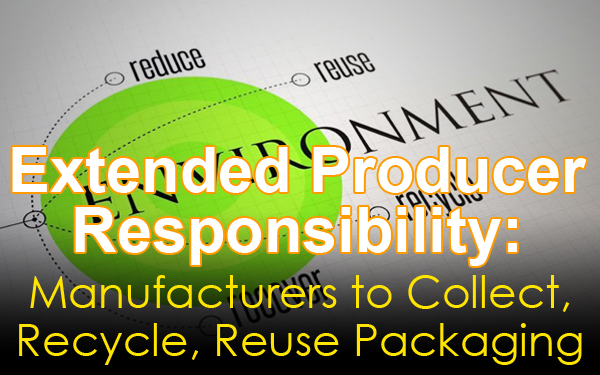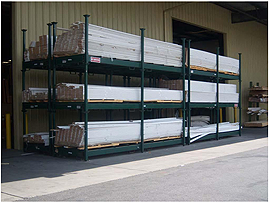
The United States of America has been no stranger to the concept of recycling and reusing products and packaging. The practice of recycling has been around in this country for more than three decades. Introduced in the 1970s, recycling is believed to be one of the oldest and most important cornerstones of the environment movement that garnered mass media attention toward the late 80s and early 90s.
The appeal of recycling and reusing that was present during the early days of the movement has faded away in recent times. People are no longer hyped up or excited about recycling products and packaging waste management. In fact, you would be surprised to know that there are many activists out there who think of recycling as a boring and fusty way of establishing the environment movement. In their opinion, there are far more exciting and innovative solutions to the problems that are being faced by Americans today.
Is the Recycling System Frozen In Time?
The lack of attention toward recycling and packaging waste management over the last decade or so has impeded progress in this field. Given the fact that people no longer think of recycling as an important solution to our environment’s problems, it is not surprising to discover that the entire recycling infrastructure in the United States has been stuck in a 1970s system.

Such a system is not only expensive, but also inefficient, which is why modern-day activists often fail to acknowledge the significance of recycling and its potential to make the world a better place to live in.
That being said, it would unfair to say that recycling rates have been stuck in a limbo over the last 30 years. The rates have steadily increased through the years. However, the consumption has increased at a much higher rate, which has allowed the recycling rates for most recyclable goods to drop below 50%.
This is not a number that the authorities, the private sector, or the consumer society can be proud of. It is also worth noting that the country continues to send $11.4 billion worth of valuable material to landfills every single year. These materials include highly reusable and recyclable materials, such as aluminum and PET plastic. It goes without saying that there is a considerable market demand for these materials that are being wasted on a yearly basis.
As You Sow Foundation

The statistics mentioned above are derived from a report that was released by an organization that is called the As You Sow Foundation. This particular organization is putting up a commendable effort to revive the concept of recycling in the country by partnering up with several enterprises, non-profit organizations, and state legislators.
Their primary motive is to introduce Extended Producer Responsibility into our current economy. Extended Producer Responsibility, or EPR, is an upgrade to the current U.S. recycling system, according to a number of activists and environmental experts.
What Is EPR?

People in America need to realize the importance of establishing a sustainable recycling system and packaging waste management program that everyone is going to appreciate. The use of recycled and re-used products does not only help the environment, but it also saves the economy a huge amount of money as long as the system functions in the manner that it was supposed to.
Under the current recycling system in the United States, the consumers have to pay for recycling. The process itself is facilitated by the municipal governments, with little to no responsibility being shouldered by the producers, who should be responsible for manufacturing recyclable and reusable goods.
In a recycling system that is based on the principles of Extended Producer Responsibility, the companies that create and use packaging will be required to collect them and recycle/reuse them in whatever way they possibly can.
As the name clearly suggests, this alternative recycling system will put some extra bit of responsibility on businesses in America. They will have to fulfill the duty of protecting the environment, and helping out municipal governments and consumers in increasing the rates of recycling.
Role of the Beverage Industry
From the point of view of the legislators, there is every reason for the United States of America to adopt the Extended Producer Responsibility recycling system. After all, this system has been employed in Europe with tremendous success. In the United States, the beverage companies were the first ones to bring up the proposal of introducing EPR into the system.

Nestle Waters and Coca Cola (although less publicly) were quite interested in giving EPR and packaging waste management a chance. What they really wanted was to see PET plastic recycling increase without further bottle bills being passed by the legislators. These bottle bills were a headache for Nestle Waters and Coca Cola, because they required them to fund the container deposits in certain states of the country.
The Expansion Plan

It is important to note that the introduction of EPR will not be restricted to the beverage industry. Experts believe that it would be a missed opportunity if the plan is not expanded to include the grocery industry alongside the beverage business. The expansion makes a lot of sense, because an increase in the number of participants (in the form of individuals, companies, or organizations) will result in a lowered cost for everyone and higher recycling rates throughout the country.
This will keep the producers, the consumers, and the environmentalists equally happy. However, such a scenario can only be achieved if the authorities are able to make a perfectly smooth transition into the EPR system, which is quite a difficult task to accomplish.
Beverage Industry versus Grocery Industry

The beverage industry has been criticized for its inability to improve the recycling rates of bottles and cans for a number of years. However, the grocery manufacturers have been able to escape the wrath of critics, legislators, and passionate environmentalists. This is the reason why the manufacturers in the grocery industry are less on board with the EPR plan. They feel as though they are not nearly as responsible as the beverage industry, for polluting the environment by neglecting recycling and reusing opportunities.
Why Are the Beverage Companies Expressing Interest?

When you think about it, you realize that the major players in the beverage industry desperately need the EPR plan for two simple reasons. First, adopting this plan and establishing it across the country will help them fend off a good number of their hostile critics.
Second, the implementation of the EPR will allow them to enjoy a much lower cost on recycled PET. Once the cost of recycled PET is reduced, beverage companies will be able to use more recycled content in bottles without getting their costs increased significantly.
In short, the primary reason why beverage companies are so deeply interested in implanting the Extended Producer Responsibility is because it will allow them to rake in more cash at the end of the day. The monetary incentive in recycling and packaging waste management is strong enough to make them really push this idea forward.
What the Beverage Companies Have to Say

The high-ranking officials of several reputable beverage companies have expressed their opinions on why the industry as a whole is promoting the idea of implementing EPR. For instance, according to Michael Washburn (director of sustainability for Nestle Waters, North America), packaging is the largest environmental footprint that the beverage companies are leaving behind.
Therefore, from the perspective of sustainability, it is very important for companies like Nestle Waters and others to increase the use of recycled PET. As of this moment, they are being unable to enhance their reliance on recycled PET. Once again, there are two simple reasons for this. The cost of recycled PET is still very high, and the supply of the product is quite limited.
The Perspective of Grocery Producers

As far as the manufacturers of the grocery industry are concerned, the monetary incentive is a lot less, compared to the one that the beverage companies are eyeing at the moment. According to many grocery manufacturers, EPR is nothing more than an additional and partly unnecessary expense that they can easily do without.
As of this moment, most grocery manufacturers, including the major players in the industry, are simply playing the waiting game. They are waiting to see how big of an issue EPR becomes in the coming months or years. If the legislators, activists and consumer society keep pushing for the implementation of EPR, then the manufacturers in the grocery industry will probably hop on the bandwagon at the last moment. However, until that happens, the producers in this industry are content with simply watching things unfold without taking any proactive actions whatsoever.
People who understand the benefits and overall value of EPR may dislike the kind of attitude that the grocery producers have put on display. However, it needs to be understood that a genuine financial incentive or the establishment of stringent regulations from the authorities are the only things that will compel the beverage companies to embrace the idea of Extend Producer Responsibility. Right now, they are pretty happy watching packaging and products worth millions of dollars ending up in landfill sites.
This begs the question, “Will EPR ever become a big enough issue for the grocery producers?” The answer depends on the actions of organizations such as “As You Sow.” If they join hands with the right companies and legislators, then they will be able to make this a big enough deal for people to be emotionally and financially invested.
The Initiation Plan

The EPR system cannot be implemented without the authorities, the legislators, and the companies paying their dues. In other words, the implantation program needs to start off with small baby steps. You cannot expect Extended Producer Responsibility to become an overnight sensation even if majority of the companies in the beverage and grocery industry get on board.
It is going to take a lot of time, patience, and effort before EPR makes its mark on individual states across the country. Hence, it is very important for the people in charge of making EPR a possibility to come up with a fail-proof initiation plan for this brand-new recycling system. The EPR program should first be established in a state that has an active curbside recycling system. This would pave the path for a unified, national EPR system.
Overcoming the Challenges of Collecting, Recycling, and Reusing Packaging

If your business is not familiar with the EPR system, or does not have the expertise to create a perfect collecting, recycling and reusing program, then there is no reason for you to feel left out. You need to think small before going big. A packaging waste management system with reusable packaging and containers that can be easily bought and sold today is a great start.
In fact, there are all kinds of reusable containers that you can purchase nowadays. Some of the more common examples include pallet containers, wire baskets, metal bins, drums, IBC Totes, insulated containers, Gaylord boxes, stack racks, and bulk bags.

These containers are used repeatedly between a consumer and a producer or within a facility. In fact, the containers can be used thousands of times, while the packaging can be easily recycled. If the economy inclines toward an EPR system, then it would be necessary for your business to rely on reusable containers that can be easily collected.
The major problem that people have with the EPR system is that the upfront costs of establishing a seamless collection system for returnable packaging seem quite high. However, producers need to realize that there is a golden opportunity to cut down on costs and boost savings in the long term, as long as the packaging is being recycled efficiently, and the bulk containers, metal bins, and totes are being used over and over again.
Think of it in this way. Once you start using and collecting reusable containers and returnable packaging, you will be able to trim labor costs significantly (as you no longer have to employ people for box assembly). The amount of time and money spent on material handling is also reduced. You will also have to deal with fewer rejects due to damaged packaging, as you are using the same containers over and over again. Most importantly, you can reap the rewards of increased floor space, as plastic and metal containers can be piled up into a huge stack.
EPR would not only help to minimize the damage caused to the environment, but would also give producers an opportunity to lower their costs and improve their profit margins. The beverage companies are ready to profit from the EPR system. The grocery producers are also considering it. It is high time that you give recycling and reusing a chance, as well.